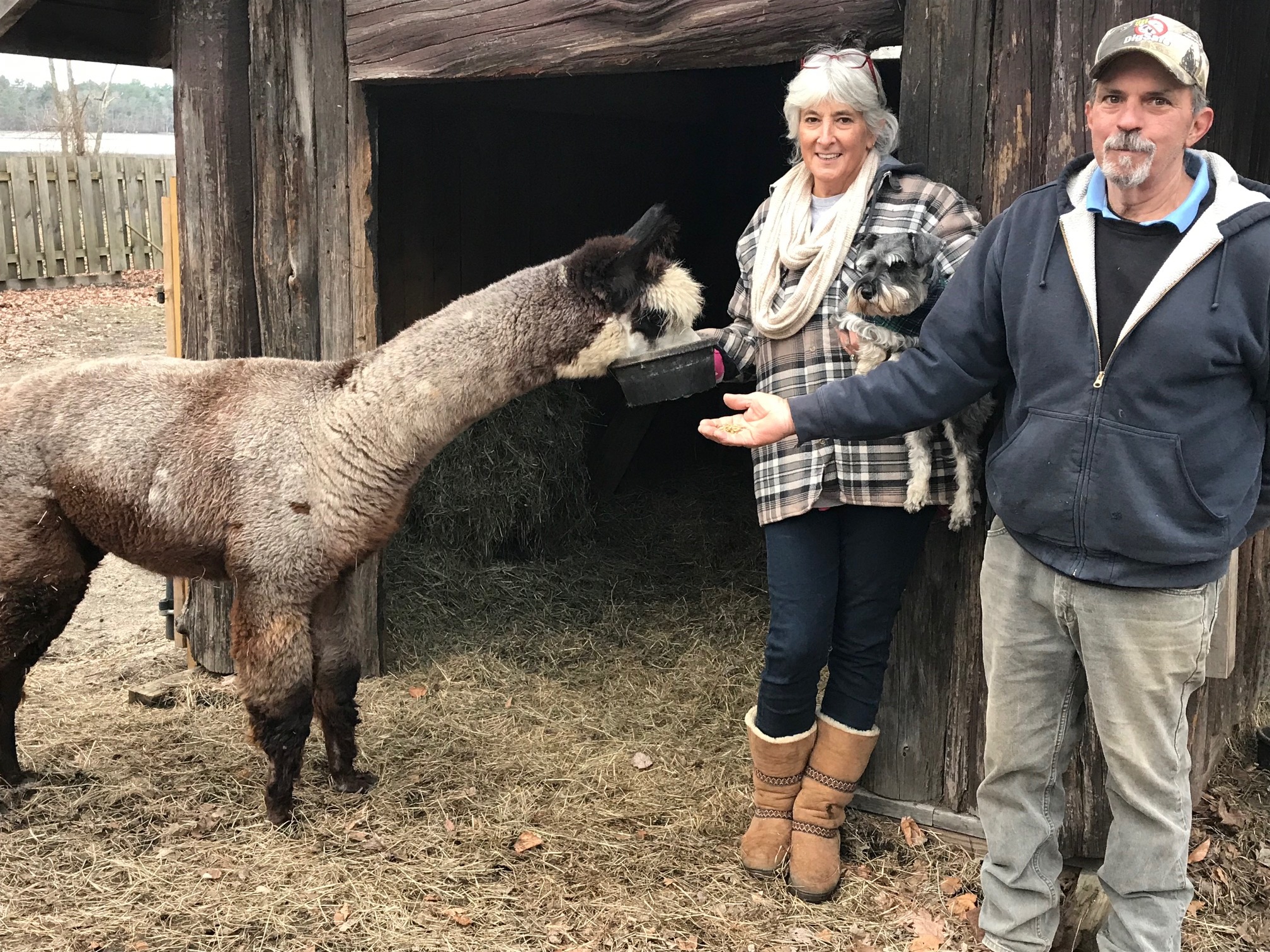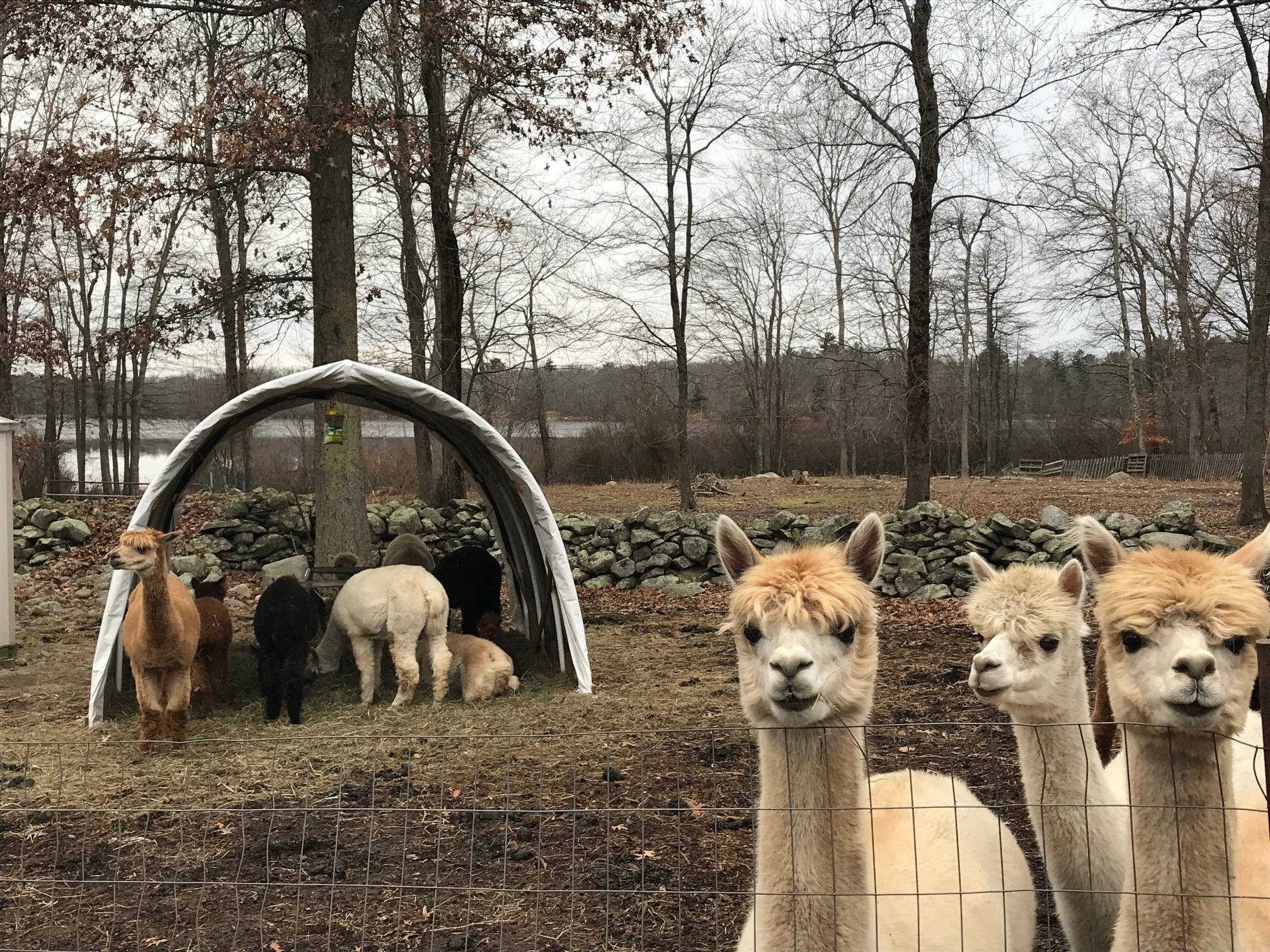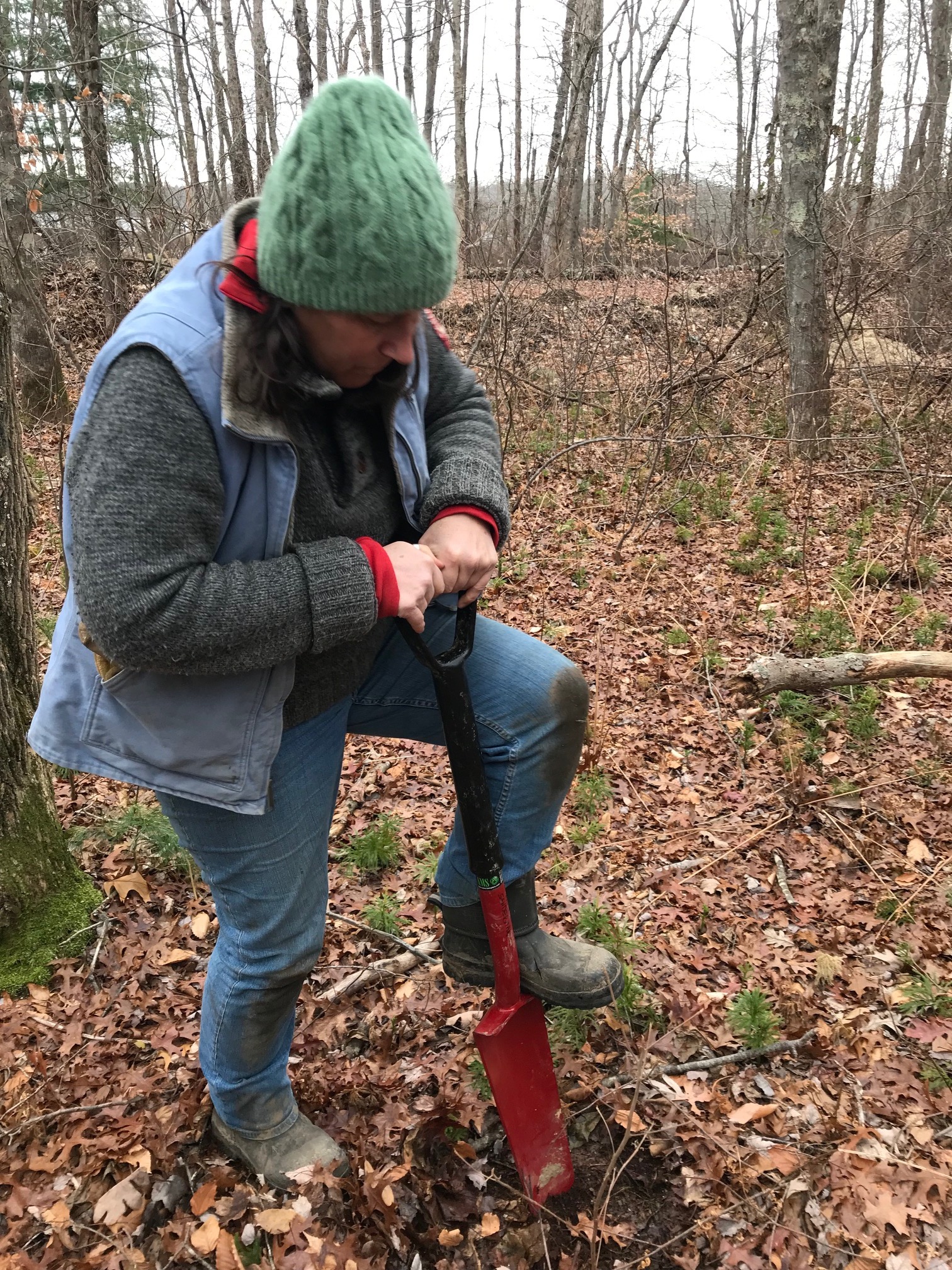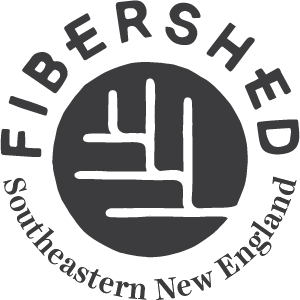
Story by Southeastern New England Fibershed intern Charlotte Atkinson
Images Amy DuFault
“The most rewarding part is looking at all those adorable fuzzy faces, each one has a unique personality. If I’m having a bad day, I walk in the field and I’m surrounded by these creatures. It just makes you smile.” –Dave Medeiros, Co-Owner of KaveRock Alpaca Farm
We are so thankful to Fibershed for giving us a grant to develop a carbon farming cohort in Southeastern New England. Our goal for this project is to strengthen the fiber farming community and encourage expansion in regeneratively-managed fiber animal grazing land in Southeastern New England by following Fibershed’s Climate Beneficial work.
The Southeastern New England Fibershed team began discussing the idea of creating a 7-farm Carbon Farming Cohort in our region inspired by Fibershed’s ongoing regenerative farming work. That vision took a step closer to reality when we were contacted by our key partner, Chris Riley of Golden Touch Alpaca Farm and the New England Alpaca Fiber Pool (NEAFP), who was interested in connecting with other local alpaca farmers to discuss carbon farming potential in their grazing and animal management systems.
Dave and Karen Medeiros are part of our alpaca cohort and the owners of KaveRock Alpaca Farm in Rehoboth, Massachusetts. The couple take care of 20 alpacas and are extremely passionate about what they do. Even though farming alpacas isn’t always the easiest job, both Karen and Dave are sincerely proud to be carrying on the family tradition of farming.
Karen says their property is a 5 acre parcel of a 200 acre farmland once owned by Dave’s grandfather. Her father-in-law (age 89) is the youngest of 12 children and lives next door. There are several cousins that still own homes in the neighborhood, but none of them farm.
“As we work to build our farm, there’s always a sense of pride that we are keeping farming in the family even at a small scale. As we learn more about carbon farming and ways in which we can help the environment, we know that we are adding value to our property, our animals and the Earth,” says Karen.
We caught up with the Medeiros family to learn more about their farm, and how they got into the business of raising these very special animals.
We are so happy to have Kave Rock Alpaca Farm as a part of our cohort, and would love to know what interested you in joining to begin with?
KAREN: The Fibershed was presented to us as a cohort group that could enhance the alpaca industry by exploring carbon farming. Since we strive to grow our farm business in a way that could help the environment, the cohort sounded like a perfect fit for us.

How did you both first get involved in raising alpacas, and what was it about them that you found intriguing?
DAVE: Our oldest daughter is a knitter and loves working with alpaca yarn, so she wanted us to have alpacas rather than goats. About seven years ago my wife found a farm online nearby in Western Mass, that had to sell their herd because of family health problems. We weren’t really ready to get alpacas, but worked hard setting up fences and buying a trailer in the pouring rain the night before. At first we thought we would get three, but came home with five. They were great animals, registered, healthy and microchipped. My wife called a local alpaca farm who became our mentors. They were really helpful and have become great friends.
Did either of you have any prior farming experience before committing to alpacas?
DAVE: We had a hobby farm with some chickens and a couple of goats. My family had farmed in this area for years. I helped my uncle and father farm hay, pumpkins, corn and potatoes. We once grew 3000 pepper plants.
I’m curious about how easy alpacas are to care for, and how big is your flock? What does a typical work day look like for you?
KAREN: Alpacas are easy to care for. They don’t challenge fences (unlike goats) and need minimal vet care. We feed our alpacas grain twice a day. In addition to that, they get free access to a second cut hay, and fresh water is always available. Typically, I do the morning feeding around 6:30 am, and Dave does the evening feeding. Winter is a little more difficult as we have to lug water and keep our buckets heated to prevent freezing. Our herd consists of 16 females and 4 males. Our youngest male is six months old so he is still in the girls’ pen (since alpacas can breed anytime, therefore males and females are kept in separate pens). We clean the girls’ barn every other day, and the manure is put in a compost heap to be used in our garden or to be packaged and sold. The field areas get cleaned every 2-4 days depending on the weather conditions. When the weather is warmer, we can plan breedings and harness training.
After shearing, how do you use the fiber to generate revenue?
KAREN: We work with the New England Alpaca Fiber Pool (NEAFP) in Fall River, MA. Our fiber is sorted and graded there, and then sent out to be spun into yarn in Millville, MA. Various mills, from NJ to Maine are utilized to produce amazing alpaca fiber products. All finish work including washing, dying, and packaging are completed back at NEAFP. We spend weekends from August through January selling products at events and farmer’s markets. When possible, we bring a few alpacas with us to show. We love to educate people on the fiber process, so having the animals with us really draws customers. Our farm is open to the public every Sunday afternoon, and we have a small store in our home as well. Online sales are also successful especially during the holidays. We have a vegetable garden on the farm, but it yields just enough for us. We would like to find a natural fiber product that we could sell in the summer months since socks and hats aren’t popular in warm weather. Dave and I still hold full time jobs away from the farm.

Southeastern New England Fibershed Co-Organizer/SEMAP Executive Director Karen Schwalbe checking out the soil before sampling
What challenges have you faced in creating soil-rich pastures and infrastructure for your flock?
DAVE: Our land is mostly wooded, and it’s also very rocky. A local tree surgeon would dump his wood chips here which we used as fill to level out areas. Between our free range chickens and the geese from the reservoir, seeds were eaten before they could grow. The cost of prepping a field and buying good quality seed to make a good sized pasture has always been more than we could afford so we started with smaller ones and grew each year. We probably should have used better quality grass seed like orchard grass but it gets expensive.
How has your knowledge of carbon farming grown since becoming involved with Fibershed?
KAREN: We knew about pollutants in the air, soil and water but never thought we could make a difference. By joining the Southeastern New England Fibershed Cohort, we have learned that we CAN make a difference! We hope to make our farm a better place for our children and grandchildren, and the knowledge that we have gained already has changed our mindset.
How do you think the conversation about carbon farming can spark interest in more farmers to get involved?
KAREN: I think it’s important to get the word out, and spell out exactly what carbon farming is all about. It’s not just a “new trend” or “buzz word.” When farmers understand that there are simple steps that they can take to enhance their farms while impacting the environment, I think they will be pleasantly surprised. Farmers work hard for little rewards. They look at something new and ask, “how will this benefit me?” and carbon farming is a win-win.
Read more on alpaca cohort members Plain View Alpaca Farm here.
